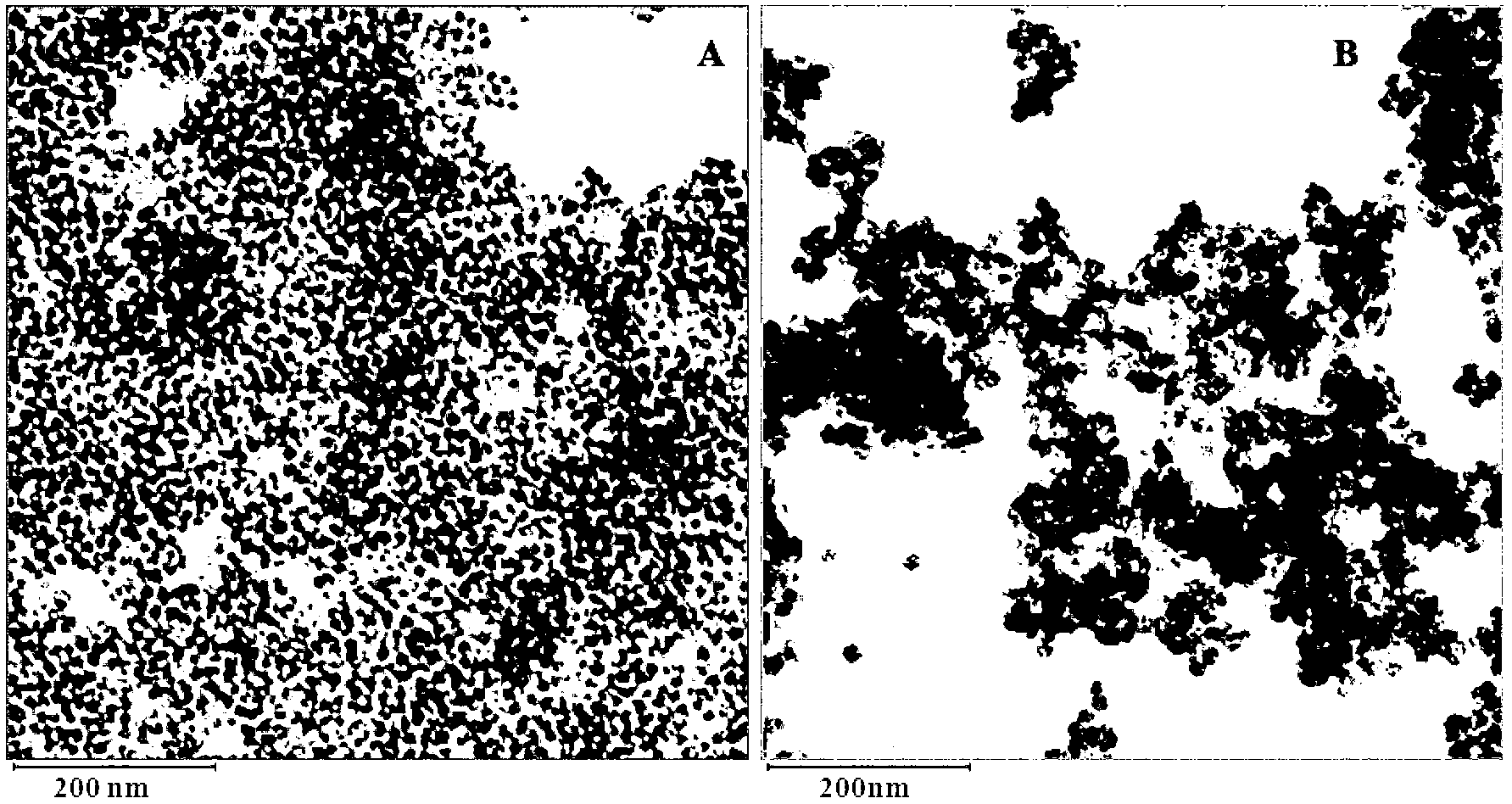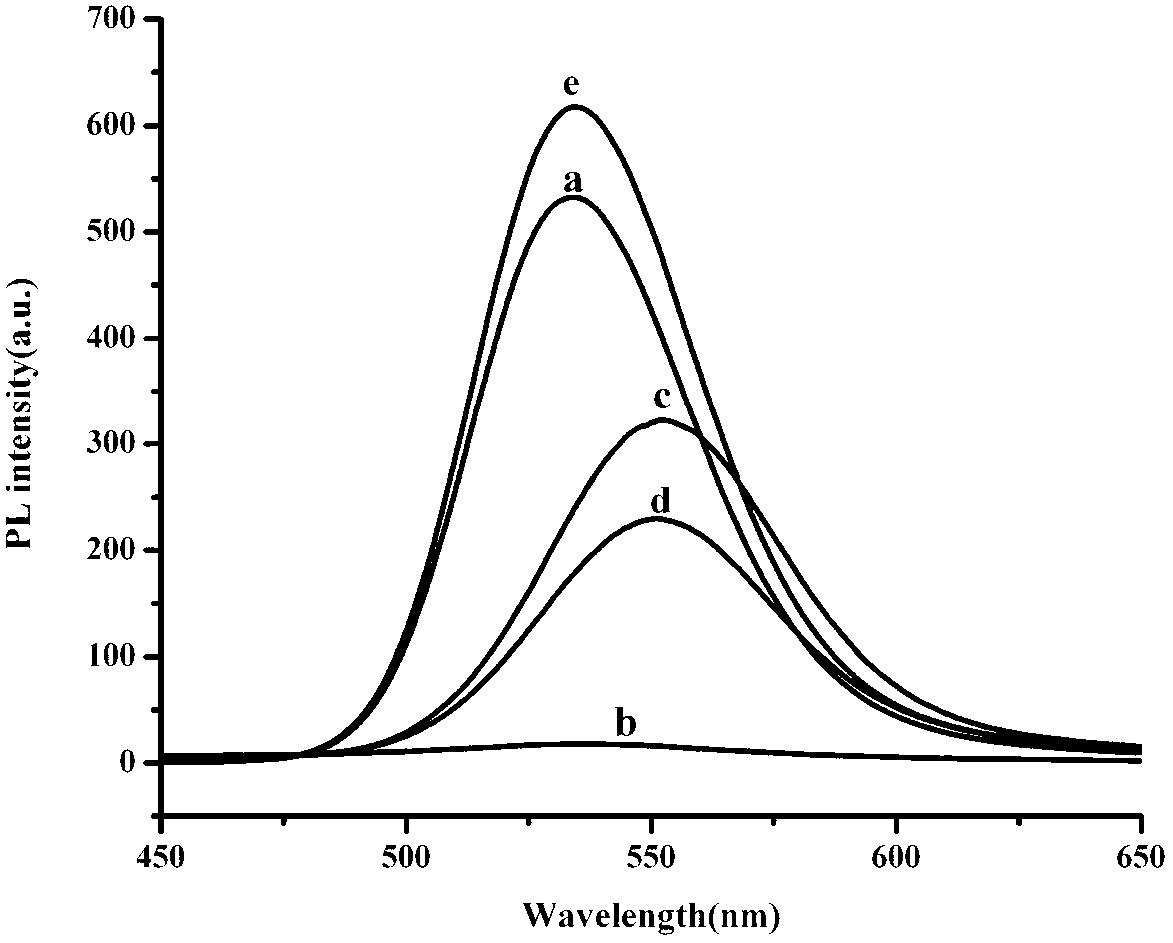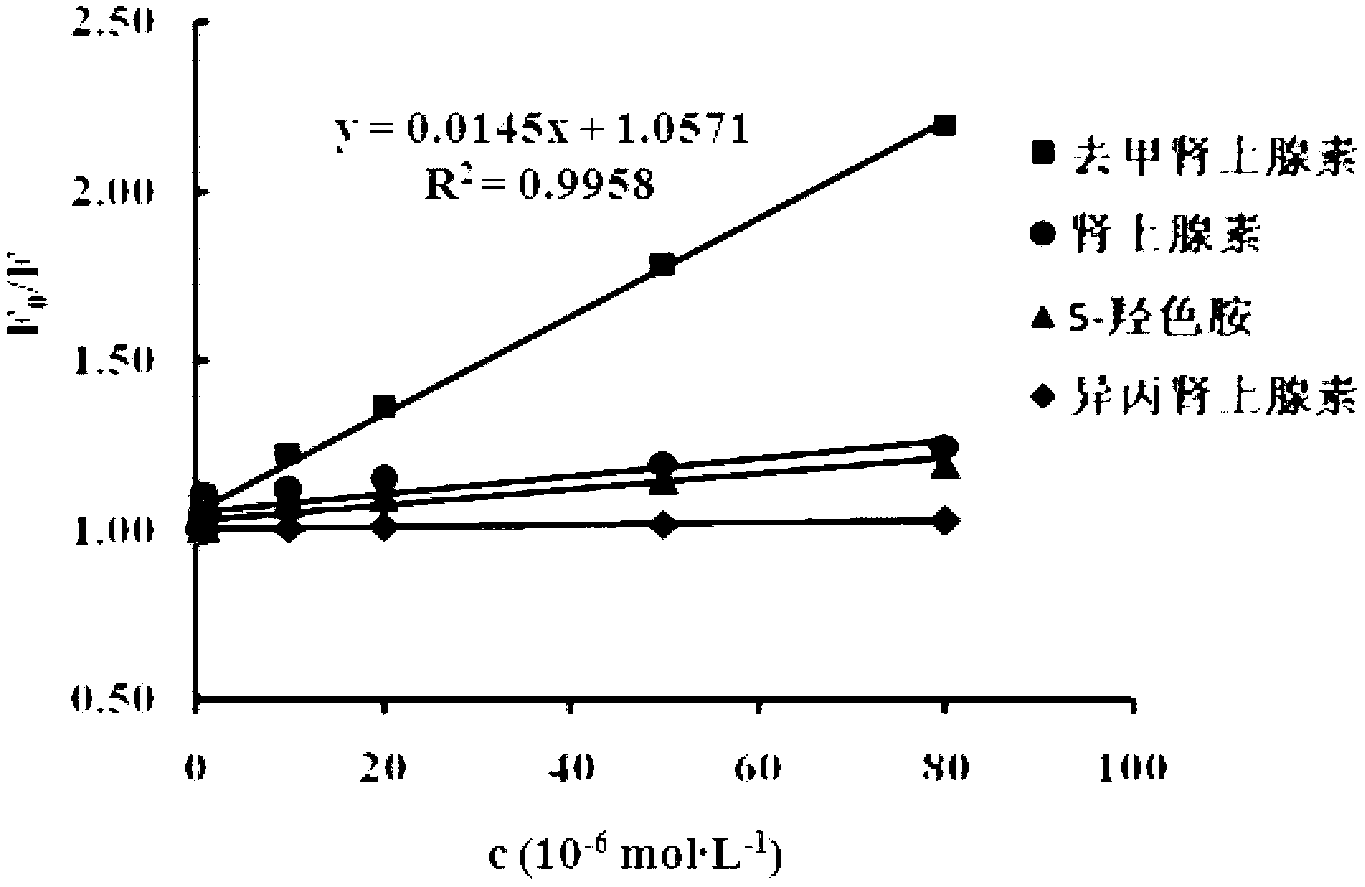Preparation method of CdTe@SiO2 quantum dot surface monoamine neurotransmitter molecularly imprinted polymer
A neurotransmitter and molecular imprinting technology, applied in the field of molecular imprinting technology, biological analysis and detection, and nanomaterials, can solve the problems of time-consuming, complicated operation and high cost, and achieve the effect of improving efficiency and rapid recombination.
- Summary
- Abstract
- Description
- Claims
- Application Information
AI Technical Summary
Problems solved by technology
Method used
Image
Examples
Embodiment 1
[0034] CdTe / SiO 2 The preparation method of the monoamine neurotransmitter molecularly imprinted polymer on the surface of quantum dots comprises the following steps:
[0035] (1) CdTeSiO 2 Preparation of quantum dots:
[0036] Accurately weigh 0.0574 g tellurium powder, 0. 2041 g NaBH 4 Into a 50 mL three-necked bottle, under a nitrogen atmosphere, inject 20 mL of freshly boiled and cooled distilled water, stir magnetically, and continue to pass nitrogen to react to obtain a light pink NaHTe solution for later use;
[0037] Add 270 mL of distilled water to another 500 mL three-necked flask, followed by adding 0.25 mol·L -1 Cd 2+ Mother liquor 6 mL, mercaptopropionic acid 627 μL, adjust pH to 9.0-10.0 with 1 mol / L NaOH, heat to 90-100°C in oil bath;
[0038] Then the NaHTe solution was introduced into a 500 mL three-neck flask, and after magnetic stirring for 10 min, 3.35 mL tetraethylorthosilicate was slowly injected, and the reaction was refluxed at 90-100 °C for 4 h u...
Embodiment 2
[0044] CdTe / SiO 2 The preparation method of the monoamine neurotransmitter molecularly imprinted polymer on the surface of quantum dots comprises the following steps:
[0045] (1) CdTeSiO 2 Preparation of quantum dots:
[0046] Accurately weigh 0.1531 g tellurium powder, 0.5443 g NaBH 4 Into a 50 mL three-necked bottle, under a nitrogen atmosphere, inject 20 mL of freshly boiled and cooled distilled water, stir magnetically, and continue to pass nitrogen to react to obtain a light pink NaHTe solution for later use;
[0047] Add 270 mL of distilled water to another 500 mL three-neck flask, followed by adding 0.25 mol·L -1 Cd 2+ Mother liquor 6 mL, mercaptopropionic acid 627 μL, adjust pH to 9.0-10.0 with 1 mol / L NaOH, heat to 90-100°C in oil bath;
[0048] Then the NaHTe solution was introduced into a 500 mL three-neck flask, and after magnetic stirring for 10 min, 3.35 mL tetraethylorthosilicate was slowly injected, and the reaction was refluxed at 90-100 °C for 4 h unde...
Embodiment 3
[0054] CdTe / SiO 2 The preparation method of the monoamine neurotransmitter molecularly imprinted polymer on the surface of quantum dots comprises the following steps:
[0055] (1) CdTeSiO 2 Preparation of quantum dots:
[0056] Accurately weigh 0.0574 g tellurium powder, 0. 2041 g NaBH 4 Into a 50 mL three-necked bottle, under a nitrogen atmosphere, inject 20 mL of freshly boiled and cooled distilled water, stir magnetically, and continue to pass nitrogen to react to obtain a light pink NaHTe solution for later use;
[0057] Add 270 mL of distilled water to another 500 mL three-neck flask, followed by adding 0.25 mol·L -1 Cd 2+ Mother liquor 6 mL, mercaptopropionic acid 627 μL, adjust pH to 9.0-10.0 with 1 mol / L NaOH, heat to 90-100°C in oil bath;
[0058] Then the NaHTe solution was introduced into a 500 mL three-neck flask, and after magnetic stirring for 10 min, 3.35 mL tetraethylorthosilicate was slowly injected, and the reaction was refluxed at 90-100 °C for 8 h und...
PUM
| Property | Measurement | Unit |
|---|---|---|
| particle diameter | aaaaa | aaaaa |
Abstract
Description
Claims
Application Information
 Login to View More
Login to View More - R&D
- Intellectual Property
- Life Sciences
- Materials
- Tech Scout
- Unparalleled Data Quality
- Higher Quality Content
- 60% Fewer Hallucinations
Browse by: Latest US Patents, China's latest patents, Technical Efficacy Thesaurus, Application Domain, Technology Topic, Popular Technical Reports.
© 2025 PatSnap. All rights reserved.Legal|Privacy policy|Modern Slavery Act Transparency Statement|Sitemap|About US| Contact US: help@patsnap.com



